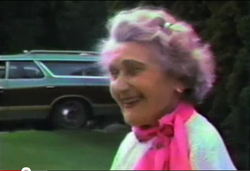
Junek was born in 1900, daughter of a blacksmith and one of eight children, of whom only four lived to adulthood. All of the surviving children were destined to spend their lives working in banks. But a life behind the cashier’s desk was not the one young Elizabeth had dreamt of. Obsessed with travel, she learned English and German – among others – in the hopes that her language skills would take her overseas.
But in 1921, Elizabeth returned to Paris to be reunited with Vincenc, who had fallen in love with sportscars in her absence. Initially unconvinced by the high-powered racing beasts, Elizabeth soon discovered that she and Vincenc had a shared passion for Bugattis. A monster was born.
1922 was a landmark year for Elizabeth Junek, who obtained both drivers’ and marriage license in the same twelve-month period. Within a year, she would be entering – and winning – races.
Elizabeth’s racing career began when she acted as riding mechanic for her husband, but when he was injured in 1923 and unable to change gears, she took over the driving duties. By 1924, she was racing solo, and won the touring cars category at Lachotin-Tremosna. One year later, at Zbraslav-Jiloviste, she took her first overall win.
As the achievements mounted throughout the 1920s, so did Junek’s fame. She was the first woman racer to compete on a level pegging with the male star drivers of the day, and is widely credited with being the first racer of either gender to do a track walk prior to a race.
One of Junek’s many achievements was to win at the original – and punishing Nurburgring, when she topped the two-litre sportscar category and became the first woman ever to win a Grand Prix. A post-race congratulatory hug from a fellow competitor is reputed to have left her with two broken ribs.
In 1928, Elizabeth entered Sicily’s Targa Florio, a challenging 325-mile course that rewarded both stamina and technical proficiency. Junek was leading the race in her Bugatti Type 35B, ahead of works-driver Louis Chiron, but got into technical difficulties on the final lap and finished fifth. Behind her were such well-known names as Luigi Fagioli, René Dreyfus, Ernesto Maserati and Tazio Nuvolari.
In the clip below, shot in the 1980s, Junek discusses her role in the Targa Florio. The announcer refers to her as an unknown, which is a serious error – by 1928, Junek was known throughout Europe as ‘the Queen of the steering wheel’.
In July 1928, the two Juneks shared driving duties at the German Grand Prix. Elizabeth had just handed over the car to Vincenc when he went off the road. The car was undamaged, but Vincenc hit his head on a rock and died instantly. Elizabeth never raced again.
Courtesy of a new car, a gift from Ettore Bugatti, Junek returned to her travels, burying her sorrow in a wealth of new experiences. But it was not to last. After the Second World War, the Iron Curtain fell, trapping Elizabeth Junek in Eastern Europe. She lived to see the fall of Communism, and died in 1994, aged 93.
 RSS Feed
RSS Feed
